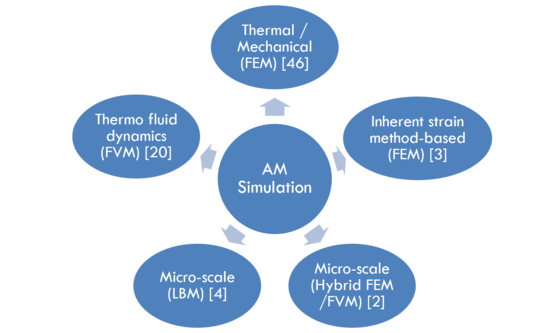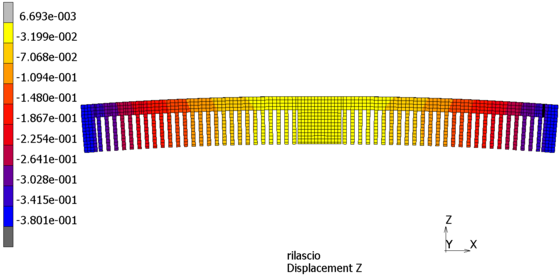Thermo-mechanical simulation of a selective laser melting Additive Manufacturing Process
Department of Mechanical Engineering, Politecnico di Milano
Author: Matteo Bugatti
Supervisor: Prof. Quirico Semeraro
Co-supervisor: Ing. Alberto Faraboschi
Supervisor: Prof. Quirico Semeraro
Co-supervisor: Ing. Alberto Faraboschi
Additive Manufacturing (AM) processes represent the future of manufacturing industry but, despite their unmatched characteristics in terms of product design flexibility, some critical aspects (such as porosities, residual stress, distortion) are limiting their spreading in the industrial world. Process optimization is always required to produce fully functional mechanical components.
Today’s process optimization is exclusively carried out relying on expensive experimental campaigns. This approach has the advantage of being the most accurate solution since results come directly from the machine. But it is a slow iterative approach which is highly expensive both in terms of times and costs because it relies on quality measurements of parts which must be directly built, thus wasting material and energy.
For these reasons, a new process optimization approach based on simulation would be extremely appealing. Following the same iterative optimization path, it would allow to avoid all the wastes (build/quality measuring costs and times) of the test-based approach, supporting the design with useful process insights without building the component. The fully functional part can then be built the “first time right” only once its production is optimized.
Despite being a relatively new topic, due to its industrial appealing, AM simulation literature is already vast. The researchers have come up with several possible solutions, which have been categorized in fig. 1: for each category, in round brackets, it is reported the employed numerical methods, which depend on the process to simulate and on the desired output, and in squared brackets the number of papers analysed for each category.
Among all the possible approaches, only inherent stain (IS) method-based AM simulation allows to complete the analysis of real-sized components by decoupling the process simulation into two analyses at different scales (meso and macro-scale), providing valuable insights about the final stress state and distortion.

Fig. 1
The IS method-based macro-scale model was created using MSC Marc (fig. 2) and its capabilities of predicting the residual deformation state of a real component were tested comparing its results with the experimental measurements carried out on a set of test specimens built with the Renishaw AM250 SLM system.

Fig. 2
The results revealed that the original, completely numerical approach (combining the results of meso and macro-scale analyses) worked well only for a few experimental conditions. For this reason, a new approach based on calibration was tested: the macro-scale model response was fitted on a subset of experimental data. For each experimented scan strategy, the numerical bending of the calibrated MSC Marc model is directly compared to the corresponding experimental confidence interval in fig. 3. This approach allowed to improve the simulation prediction performance, in fact the simulated bending almost perfectly matches the mean for all the three experimental conditions.

Fig. 3
However, at the same time, the obtained results opened some questions regarding the wide range applicability of the calibrated IS model on which the whole method is based. Only further experimental work will give a final answer about the real validity of this method for AM simulation.